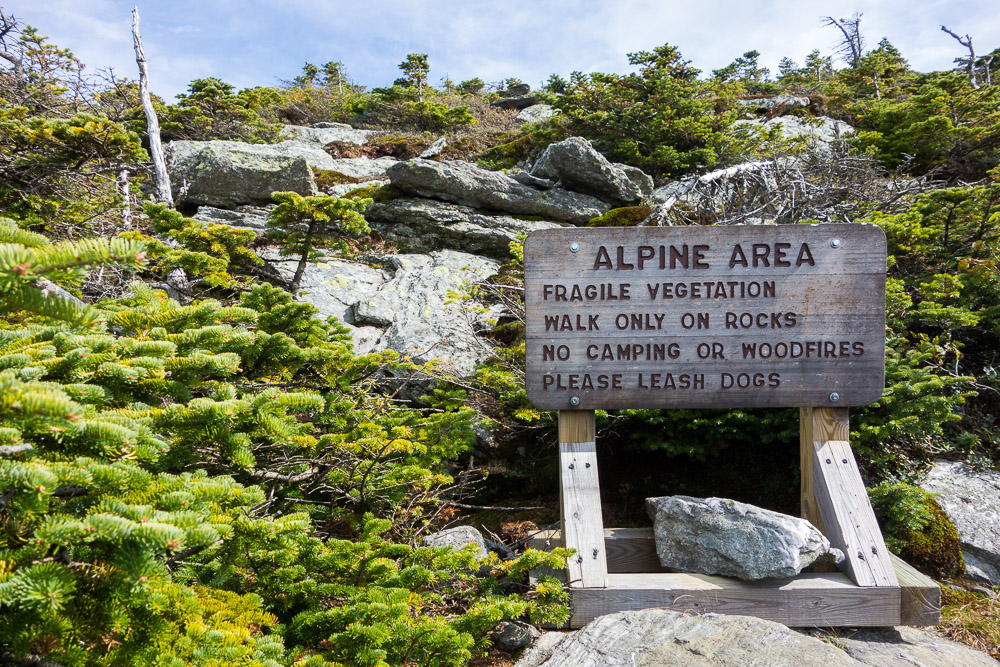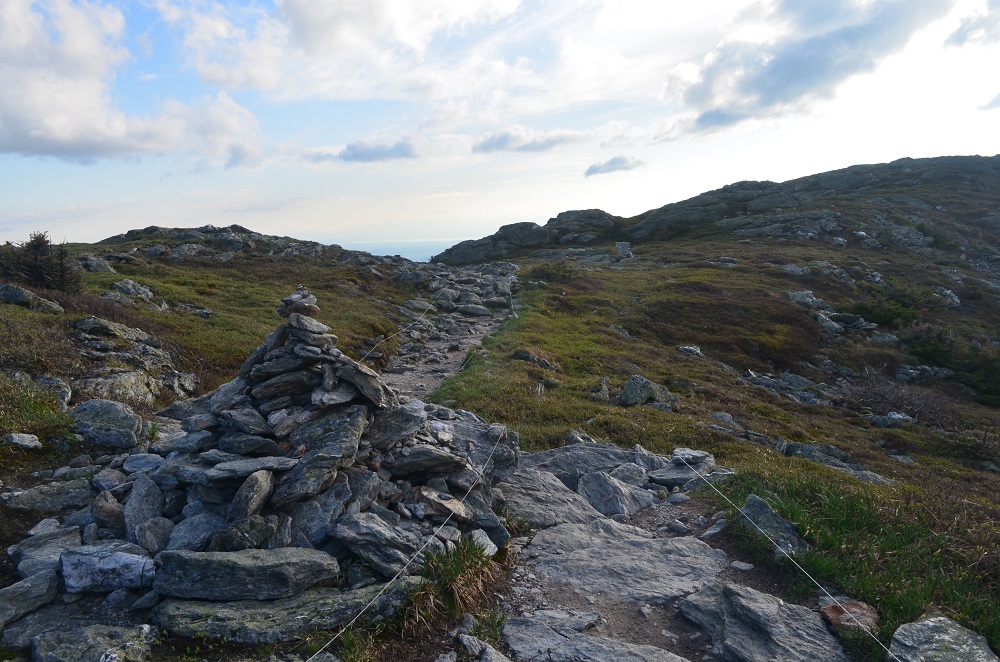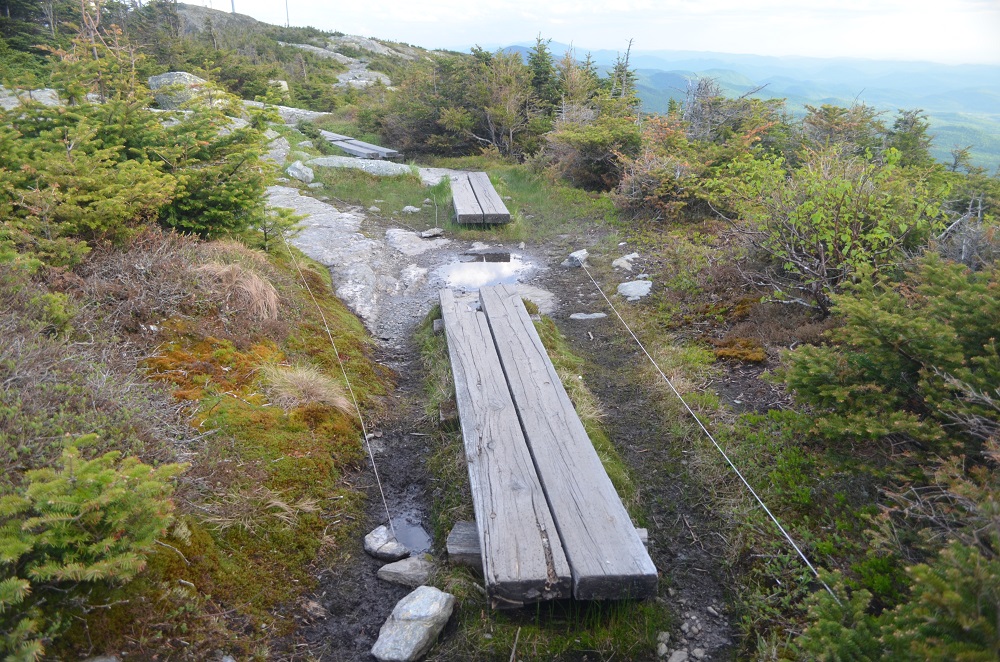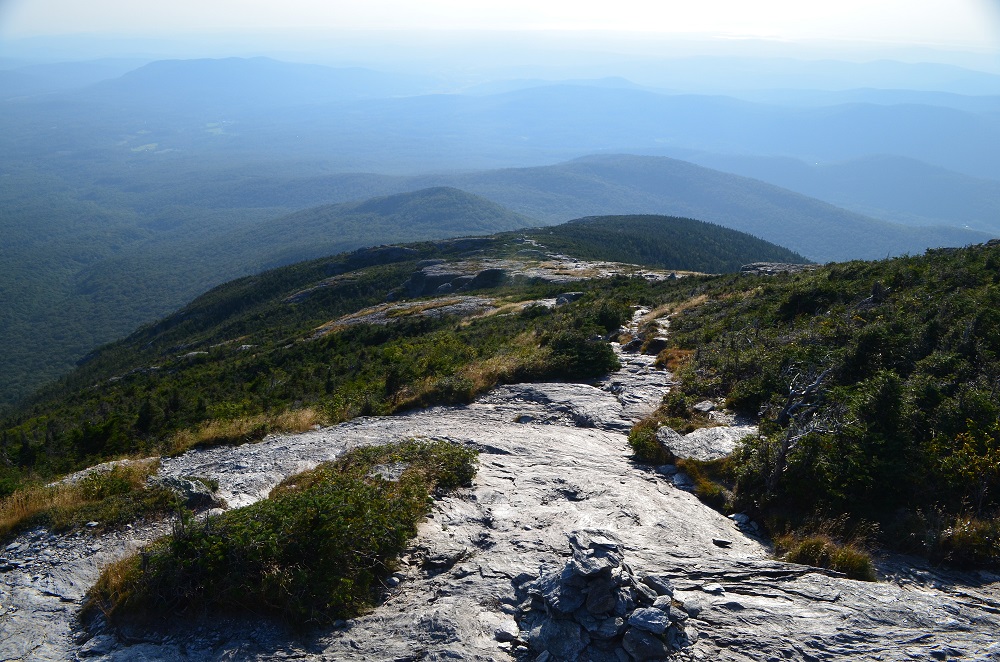This post was written by Adam Joseph, GMC’s Lead Caretaker on Mount Mansfield.

If you’re hiking to the summit of Mount Mansfield, Camel’s Hump, or Mount Abraham in Vermont, you will be entering areas with Vermont’s only alpine tundra. Alpine tundra can occur above treeline where there are adverse conditions, usually too cold and windy for most plants. The plants that are in the alpine zone are remnants of the last ice age, and less than 275 acres of alpine tundra remains in Vermont. Alpine plants are rare, fragile, endangered, and are easily killed from both human and animal footsteps.
Good outdoor ethics would suggest that you always try to stick to hard surfaces but in these rare arctic tundra zones, it is especially important. When above treeline, please do the “rock walk”: stay on trails or bare rock, do not walk or sit on vegetation or soil, and leash your pet. GMC Caretakers are posted in these alpine zones during the summer to help educate hikers about the area and their impact. When caretakers are not present, there is string marking out suggested pathways on the summits. But even if you see a plant on the trail or inside the string, it is more than likely a rare plant! Please do your best to avoid stepping on anything other than rock or puncheon. And don’t forget your pets! Dogs, too, compact soil. They can’t distinguish between rare plants and the grass they roll around on at home. Please be sure to have them leashed and on trail with you anywhere above treeline.

There is another endemic problem on these summits, in particular, the Sunset Ridge Trail on Mount Mansfield. First, a little about that trail: Because of the caustic winter weather and bitter winds it receives from the west and over the lake and combined with the flat valley floor, the West Chin’s shoulder, “Sunset Ridge,” houses a wealth of rare plants. Those harsh conditions keep the less hardy valley plants at bay, allowing for less root competition for the hardier ancient tundra plant species to live. These plants focus a lot of energy on their roots, which are out of the weather. Sunset Ridge is host to at least four endangered species, some of which exist nowhere else in the world outside of the Northeast’s summits. Other species found there have less than a dozen individual specimens cataloged in the state. It is a beautiful, exposed ridge with excellent views of The Chin, Thunder Basin, Bear Claw Ridge, the Adirondacks, Lake Champlain, and the valley that precedes it. As its name would suggest, it is a great place to watch the sun fall.
Sounds beautiful, right? What seems to be the issue? Cairns. The Underhill State Park maintains the cairns on the ridge for winter white-out travelers but every year tens of thousands of visitors to the park ascend the trail, adding rocks and making the cairns excessively bulky in spring, summer, and fall. Be it for the sake of family tradition, superstition, or good luck, I can certainly understand the appeal. In fact, before I worked for Green Mountain Club I’m ashamed to report that I was once a recreational cairn builder. Having everyone in the family add a small stone to the cairns may make it feel like you are helping with trail work or that it’s just a harmless drop in the bucket, but please be aware that these stones, big or small, play a pivotal role in holding soil. As the fine silt-like soil erodes from higher up the mountain, it washes against these rocks, eventually collecting enough to support moss, then sandwort, sedge, bilberry, and so on. Repopulating these areas starts small. Aside from holding that precious soil, these rocks provide wind and weather shelter for the plants that take root there.

If you have ever been to Sunset Ridge you know that even on a clear day it can be difficult to know just where you ought to be walking. This is in part due to recreational cairns, built off trail out of boredom or for fun or sport. These cairns lead to what are called social trails. Those unnecessary cairns detour people into the margin areas, and the soil and vegetation then get ground up and compacted underfoot making it an inhospitable habitat for these precious alpine plants. Please leave it up to the state park, caretakers, and trail crews to build cairns.
The alpine zone is a wonderful place to visit, but with that visit comes the responsibility of protecting the environment. Stick to the trail and if you absolutely need to find your own ledge, please don’t compromise – stay on the hard surfaces. With 70,000+ summer visitors to Mount Mansfield alone becoming the norm, it is especially important to be conscious of the rare biome you are in.




















[…] easy to spot, trying to eat lunch in a stiff summit wind or running off to corral hikers who have walked too far off trail. Much of our time is spent in conversation with […]